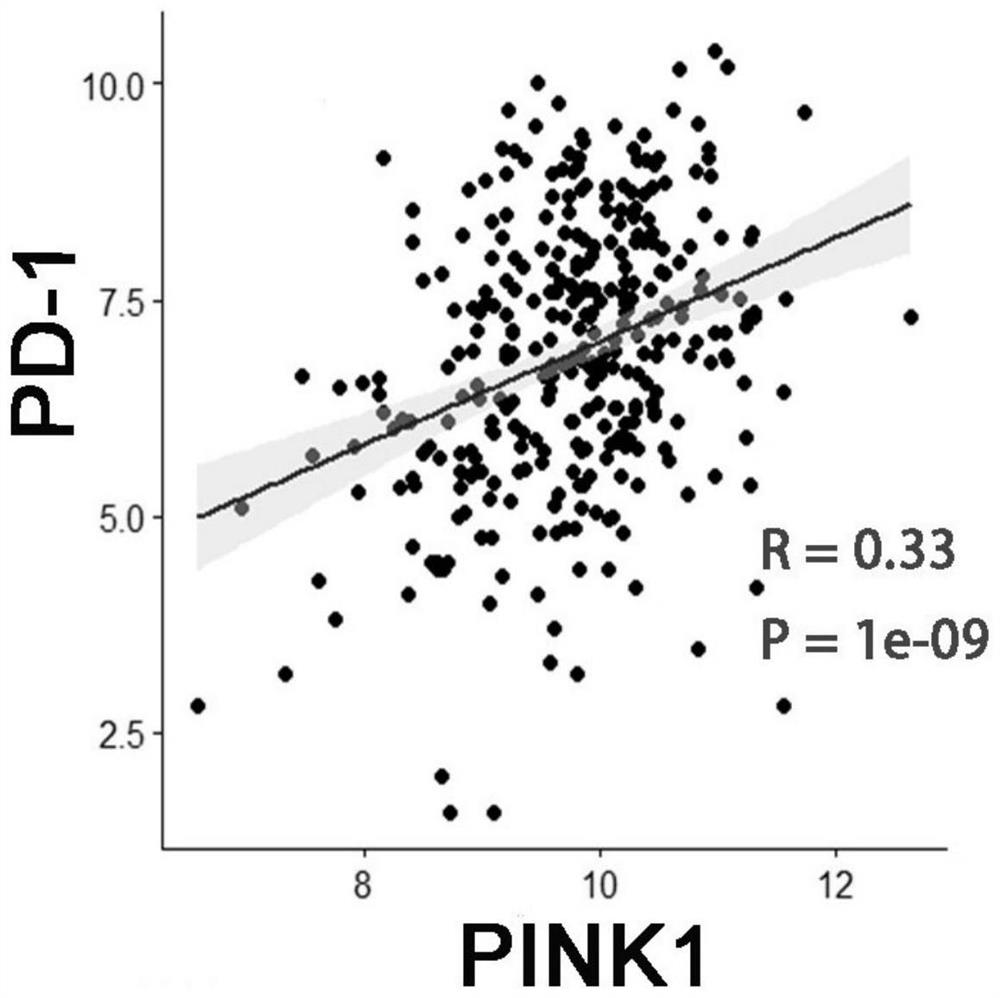Application of PINK1 as diagnostic marker in construction of lung squamous cell carcinoma prognosis prediction model
A technology of diagnostic markers and predictive models, applied in the field of biomedicine, to achieve high accuracy, high sensitivity, reduce treatment costs and discomfort experience
- Summary
- Abstract
- Description
- Claims
- Application Information
AI Technical Summary
Problems solved by technology
Method used
Image
Examples
Embodiment 1
[0023] Example 1 Model Construction and Effect Verification
[0024] 1. Method
[0025] 1.1 The training set comes from the RNA sequencing data and clinical data of 326 cases of lung squamous cell carcinoma from the TCGA database, and the expression profiles of autophagy-related genes (Autophagy-Related-Genes, ARGs) are obtained, and the verification set comes from the RNA sequencing data of 78 cases of lung squamous cell carcinoma from the GTO database , to obtain all RNA expression profiles and autophagy-related genes (Autophagy-Related-Genes, ARGs) expression profiles.
[0026] 1.2 The ARGs related to prognosis were screened out through survival analysis, and then the most critical survival-related ARGs (PINK1) were obtained by the random forest method, and a risk prediction model based on this gene was constructed through the deep machine learning method of the random forest. Patients were divided into low-risk and high-risk groups according to the model. The model was v...
PUM
 Login to View More
Login to View More Abstract
Description
Claims
Application Information
 Login to View More
Login to View More - R&D
- Intellectual Property
- Life Sciences
- Materials
- Tech Scout
- Unparalleled Data Quality
- Higher Quality Content
- 60% Fewer Hallucinations
Browse by: Latest US Patents, China's latest patents, Technical Efficacy Thesaurus, Application Domain, Technology Topic, Popular Technical Reports.
© 2025 PatSnap. All rights reserved.Legal|Privacy policy|Modern Slavery Act Transparency Statement|Sitemap|About US| Contact US: help@patsnap.com



